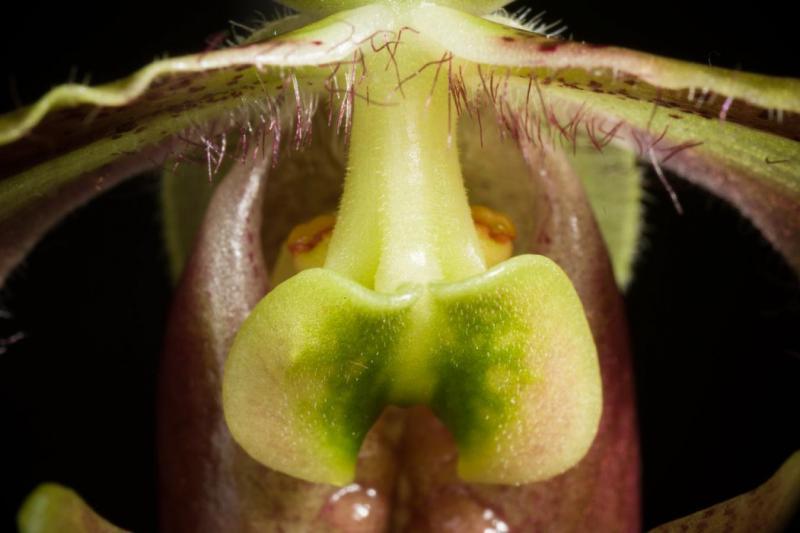Paphiopedilum bullenianum
Also known as: Bullen's Paphiopedilum or Paphiopedilum hookerae var. bullenianum Paphiopedilum bullenianum var. johorense Paphiopedilum bullenianum h.v. tortipetalum Paphiopedilum bullenianum h.v. amabile Paphiopedilum bullenianum h.v. celebense Paphiopedilum bullenianum h.v. ceramensis Cypripedium robinsonii Paphiopedilum bullenianum h.v. celebisensis Paphiopedilum bullenianum var. bullenianum Paphiopedilum amabile Paphiopedilum bullenianum h.v. celebesensis Paphiopedilum robinsonii Paphiopedilum linii Paphiopedilum tortipetalum Paphiopedilum celebesense Paphiopedilum celebesensis Paphiopedilum celebense Paphiopedilum bullenianum var. celebesense Paphiopedilum johorense Cordula bulleniana Paphiopedilum johorensis Cordula amabilis Paphiopedilum linii h.v. kalimantanensis in the subfamily: Cypripedioideae
Native to: Malaysia
General Information
Bullen's Paphiopedilum is a medium sized warm to hot growing epiphytic or terrestrial orchid belonging to the sub family Cypripedioideae native to Malaysia. It is named after the English Orchid Gardener in the 19th century.
Plant Description
Each new growth has numerous erect elliptic leaves
Flowers
Numerous blossoms appear during Winter and Spring
Blooming Season
- Spring
- Winter
Care Notes
These orchids have a fine root system that can quickly die back if left dry for too long, but also does not like to be kept wet, so water regularly but ensure that the mix is dry before watering.
Climate
Grows at high elevations.
Fertiliser
These plants do well with slow release fertiliser at the rate of 2-3 pellets per cup (250ml) of media. Additional fertiliser during the growth period may be beneficial, but not necessary.
Potting
These plants can be sensitive to repotting though should not require repotting regularly. Repotting should be done when the mix has broken down to the point that it doesn't absorb water or holds onto water for far too long, usually the plant shows a decline in growth as well.
The mix should be free draining, with a blend of 30% inorganic ingredients such as coarse sand, gravel or perlite, mixed in with about 70% organic ingredients such as peat, leaf litter or decomposed bark. Avoid commercial potting mixes as they can vary wildly and may contain "wetting agents" that can hold onto water for loo long, causing rotting and stunted growth.

















